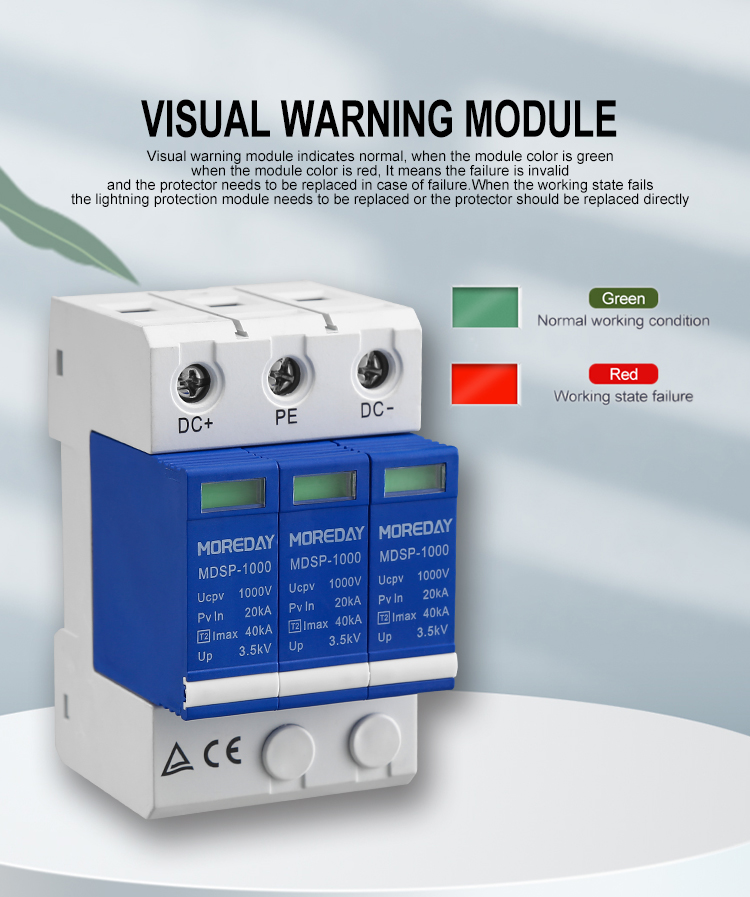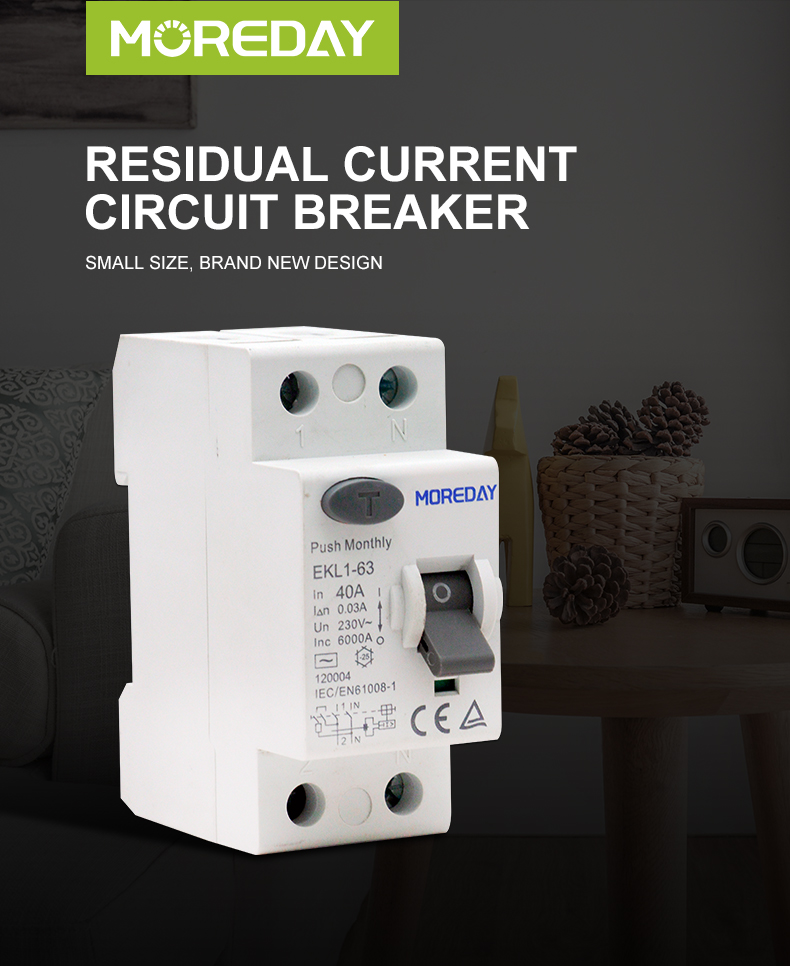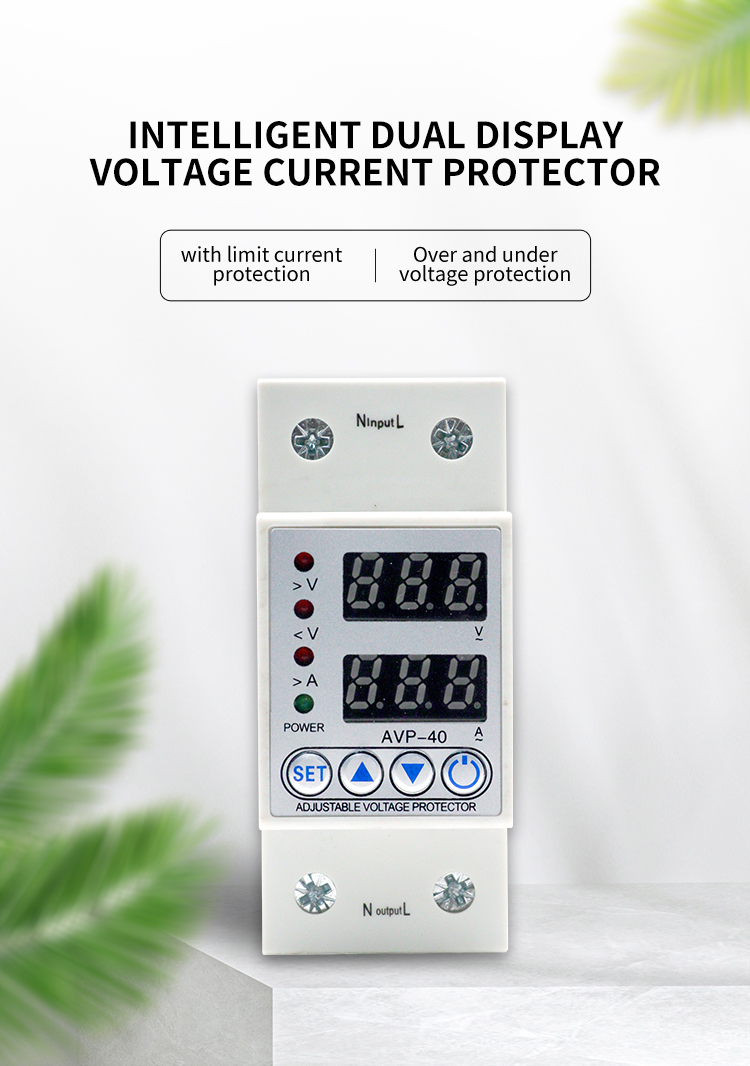Nowadays, every household is inseparable from the use of electricity, and the safety of household appliances has become more and more important to everyone. In order to protect our electricity safety, all kinds of devices that can disconnect the circuit have been produced. Among them, we are more familiar with surge devices, lightning arresters, leakage protection, overvoltage and undervoltage protectors, but we can’t tell them apart. What is the difference between these types of protection devices? Today we will take a look at the differences between surge devices, lightning arresters, leakage protection, and overvoltage and undervoltage protectors. Hope to be able to help everyone.
First, the difference between surge and mcb
1. Surge protector
Surge protector (SPD), also known as “surge protector” and “surge arrester”, is to limit the surge caused by strong transient overvoltage in electrical circuits and communication lines, thereby protecting equipment. Its working principle is that when there is an instantaneous overvoltage or overcurrent in the line, the surge protector will turn on quickly and discharge the surge in the line into the ground.
According to the different protection equipment, it can be divided into power surge protector and signal surge protector.
1) Among them, the power surge protector can be a first-level power surge protector, a second-level power surge protector, a third-level power surge protector and a fourth-level power surge protector according to the same capacity;
2) Signal surge protector can be divided into network signal surge protector, video surge protector, monitoring three-in-one surge protector, control signal surge protector, antenna feeder signal surge protector, etc.
2. Leakage protector
The leakage protector, referred to as the leakage switch, is also called the leakage circuit breaker. It is mainly used to protect the equipment from electric shock and electric shock to persons with fatal danger. It has overload and short-circuit protection functions, and can be used to protect the circuit or motor. Short circuit can also be used for infrequent switching of the line under normal circumstances.
The leakage protector also has a name called “residual current operated protector”, what does it mean? It is to detect the residual current. It is mainly divided into three parts: detection element, intermediate amplification mechanism and actuator.
Detection element: This part is a bit like a zero-sequence current transformer. The main component is a hoop (coil) full of wires through which the neutral and live wires are passed. This coil is used to monitor the current. Under normal circumstances, a neutral wire and a live wire in the coil should have opposite current directions and the same current size. At this time, the sum of the two vectors is 0. If there is leakage in the circuit, then a part of the current will leak out. At this time, if the detection is performed again, the sum of the vectors will not be 0. Once it is detected that the sum of the vectors is not 0, the detection element will pass this signal to the intermediate link.
Intermediate amplifier mechanism: The intermediate link includes amplifier, comparator and trip unit. Once the leakage signal from the detection element is received, the intermediate link will be amplified to transmit the signal to the actuator.
Actuator: This mechanism is composed of an electromagnet and a lever. When the intermediate link amplifies the leakage signal, the electromagnet is energized to generate magnetic force, and the lever is sucked down to complete the tripping action.
3. voltage protector
Overvoltage and undervoltage protectors are protective devices that limit lightning overvoltage and operating overvoltage. It is mainly used to protect the insulation of electrical equipment such as generators, transformers, vacuum switches, busbars, and motors from voltage damage.
Second, the difference between surge, leakage protection, overvoltage and undervoltage protectors
1. The difference between surge protector and leakage protector
1) The leakage circuit breaker is an electrical appliance that can connect and disconnect the main circuit, and has the functions of leakage protection (human body electric shock), overload protection (overload), and short-circuit protection (short-circuit);
2) The popular point of the surge protector is to prevent lightning. When there is lightning, it protects the user’s line safety and the safety of electrical equipment. It assists in protection and does not control the line.
The leakage protector is a short circuit in the circuit or there is leakage or a short circuit to the ground. If the wire is broken, etc., the current is too large, and it will automatically trip to avoid burning the circuit. Surge is to protect the circuit when the voltage suddenly increases or lightning strikes to avoid the expansion of the range, sometimes called a lightning arrester, as the saying goes.
2. The difference between surge protector and overvoltage protector
Although they all have overvoltage protection functions, the surge protector protects the hazards caused by high voltage and high current caused by lightning, while the overvoltage protector protects the damage caused by lightning or excessive grid voltage. Therefore, the overvoltage and overcurrent caused by lightning and the overvoltage and overcurrent caused by the power grid are obviously not the same level.
The leakage protector only controls the current, ignoring the control of the voltage. On the basis of the leakage protector, the surge protector and the overvoltage protector are added to realize the protection of the current and voltage, so that the current and voltage can be avoided. The abnormal sudden rise will cause damage to life and property.
Post time: Oct-07-2022













